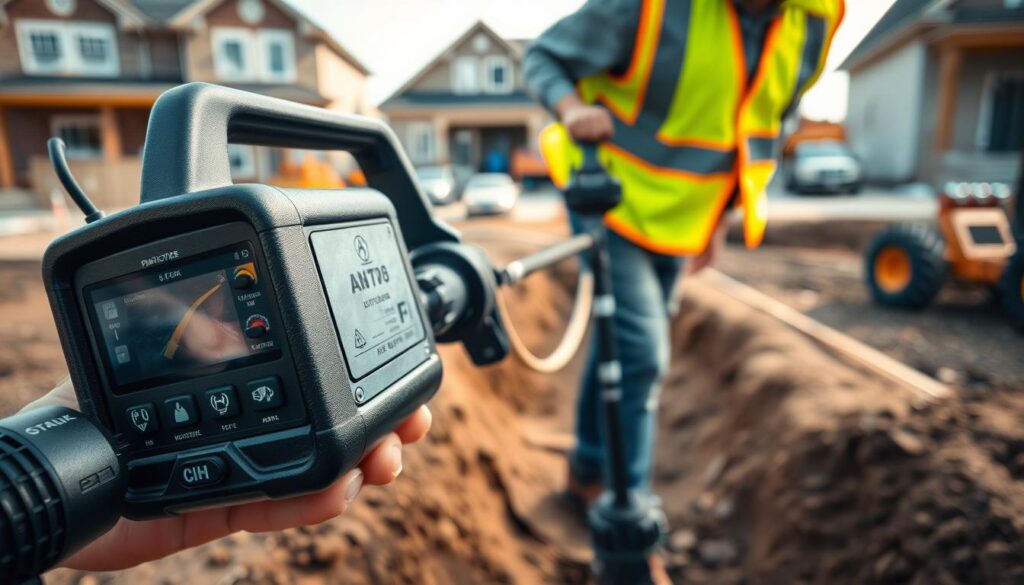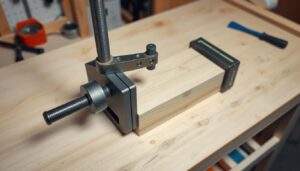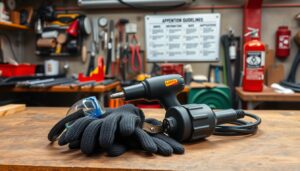Imagine drilling into a wall, only to discover you’ve hit a live electrical cable or a gas pipe. Such incidents can be disastrous, causing injuries, damage, and even fatalities. The reality is that many homeowners and professionals face this risk daily when undertaking DIY projects or installations without properly detecting hidden utilities.
Using the right detection techniques and devices can save you from such calamities. It’s not just about avoiding costly repairs; it’s about ensuring your safety and the safety of others. This guide will walk you through the best practices for detecting hidden pipes and cables, helping you to undertake your projects with confidence.
Key Takeaways
- Understand the importance of detecting hidden utilities before starting a project.
- Learn about different types of detection devices and their applications.
- Discover step-by-step guides on how to use detection devices effectively.
- Recognise common misconceptions about wall structures and hidden utilities.
- Avoid costly and dangerous mistakes with proper detection protocols.
Understanding Pipe and Cable Detectors
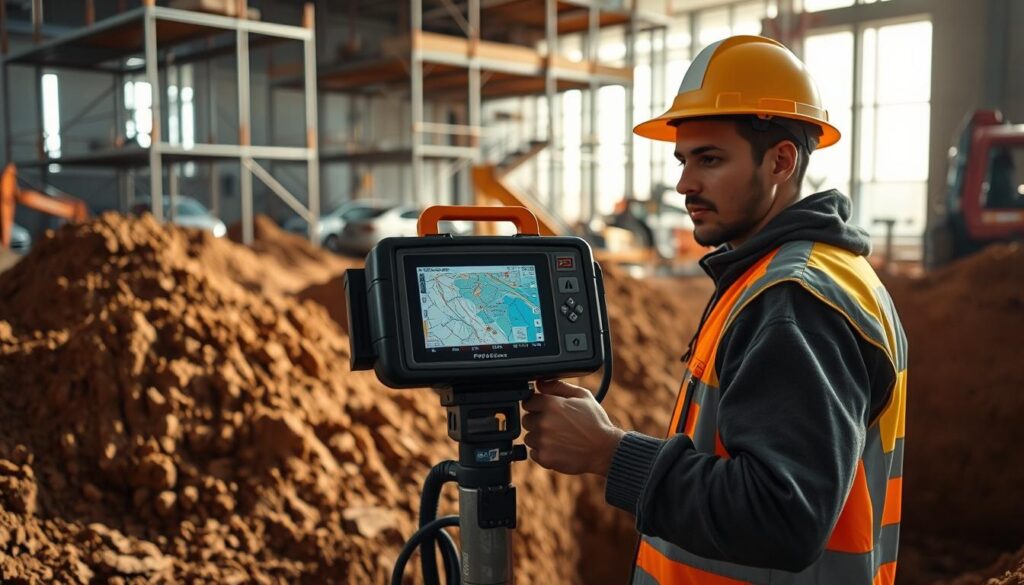
Pipe and cable detectors are essential tools for identifying hidden dangers within your walls before you start drilling or cutting. These devices are designed to locate pipes, cables, and metal objects behind surfaces, helping you avoid potential hazards.
What Are Pipe and Cable Detectors?
Pipe and cable detectors are specialised devices that use various technologies to detect hidden objects within walls. They are crucial for ensuring safety during DIY projects or construction work.
Types of Detectors Available in the UK Market
The UK market offers a range of detectors, from basic stud finders to advanced multi-function devices. These devices can differentiate between pipes, electrical cables, and metal studs, providing users with a clear understanding of what’s behind their walls.
How These Devices Work
Detectors use technologies such as electromagnetic fields and metal detection to locate hidden objects. Electromagnetic field detection is particularly useful for identifying live electrical cables, while metal detection is effective for pipes and non-live wires.
Why Using Pipe & Cable Detectors Safely Matters
Safety should always be your top priority, and using pipe and cable detectors is a key part of that. When you’re working on a project that involves drilling or cutting into walls, the risk of damaging hidden utilities is ever-present. This can lead to serious consequences, including electric shocks, gas leaks, water damage, and structural issues.
Potential Hazards of Drilling Without Detection
Drilling into a wall without proper detection can be disastrous. You might hit a live cable, causing electric shocks or even a fire. Similarly, drilling through a gas pipe can lead to leaks, which are not only dangerous but also potentially explosive. Water damage is another risk if you hit a water supply line. These hazards can result in costly repairs and pose significant safety risks to you and others.
Real-Life Incidents and Consequences
There are numerous accounts of engineers and DIY enthusiasts encountering problems when they didn’t use detection equipment properly. For instance, an electrician might drill through a gas pipe running from floor to ceiling with minimal plaster covering, as in the case of a recent incident where an electrician fitting a new fire drilled through such a pipe. These incidents highlight the importance of using detectors to avoid such problems.
- Exploring the serious consequences of drilling or cutting into walls without proper detection.
- Sharing real-life incidents where improper detection led to emergencies.
- Detailing the potential financial implications of damaging hidden utilities.
Legal and Insurance Implications in the UK
In the UK, there are specific regulations and standards regarding work around electrical cables and gas pipes. Failure to use detection equipment properly can lead to legal repercussions, especially for professional tradespeople. Moreover, incidents caused by negligence can result in increased insurance premiums or even policy cancellations, potentially costing you a lot of money. It’s essential to understand these implications to avoid such problems.
Even experienced engineers can encounter issues with improperly installed utilities, especially in older UK properties where utilities may have been installed years ago without proper documentation or adherence to modern standards. This underscores the need for vigilance and the use of detection equipment to ensure your safety and the integrity of the work.
Preparing to Use Your Pipe & Cable Detector
Before you start using your pipe and cable detector, it’s crucial to prepare yourself and the detection area. This preparation ensures that you get accurate readings and avoid potential hazards.
Essential Pre-Detection Checklist
To ensure safe and accurate detection, you should follow a comprehensive pre-detection checklist. This includes removing any metal objects from your hands and ensuring the detection area is clear of interference sources.
- Remove jewelry, watches, and other metal accessories to prevent false readings.
- Keep electronic devices such as mobile phones away from the detection area.
- Ensure the wall surface is clear of metal fixtures and other items that might interfere with the detector.
Removing Interference Sources
Interference sources can significantly affect the accuracy of your pipe and cable detector. To minimize this, you should remove or avoid certain items.
Jewelry and Watches
Wearing jewelry or watches can cause the detector to give false readings. It’s recommended to remove these items before starting the detection process.
Mobile Phones and Electronic Devices
Electronic devices can also interfere with the detector’s accuracy. Keep these devices at a distance to ensure reliable results.
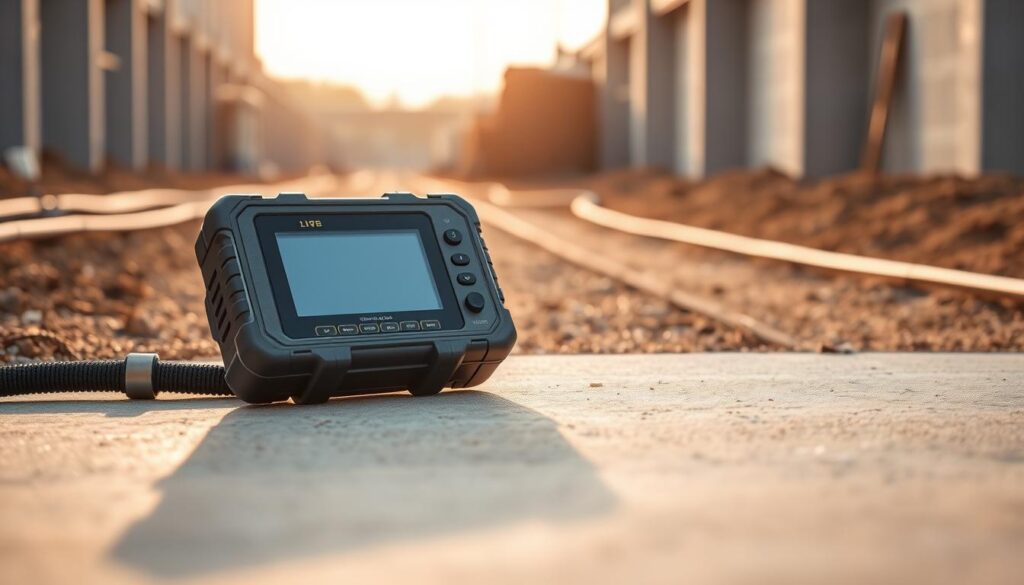
Ensuring Proper Grounding
Proper grounding is essential for accurate detection. To achieve this, place one hand flat against the wall about 20-30 cm away from the detector. This technique helps to improve the device’s accuracy by providing a reference point.
By following these steps, you can ensure that your pipe and cable detector works effectively and provides accurate results, keeping you safe during your project.
Step-by-Step Guide to Use Pipe & Cable Detector Safely
To ensure your safety while drilling, it’s essential to understand how to use a pipe and cable detector correctly. This guide will walk you through the process, from positioning the device to interpreting the detection signals.
Correct Positioning of the Device
Positioning the detector correctly against the wall is crucial for accurate readings. Ensure the entire device is in contact with the wall surface, whether it’s concrete, drywall, or plaster. This ensures that the detection results are reliable.
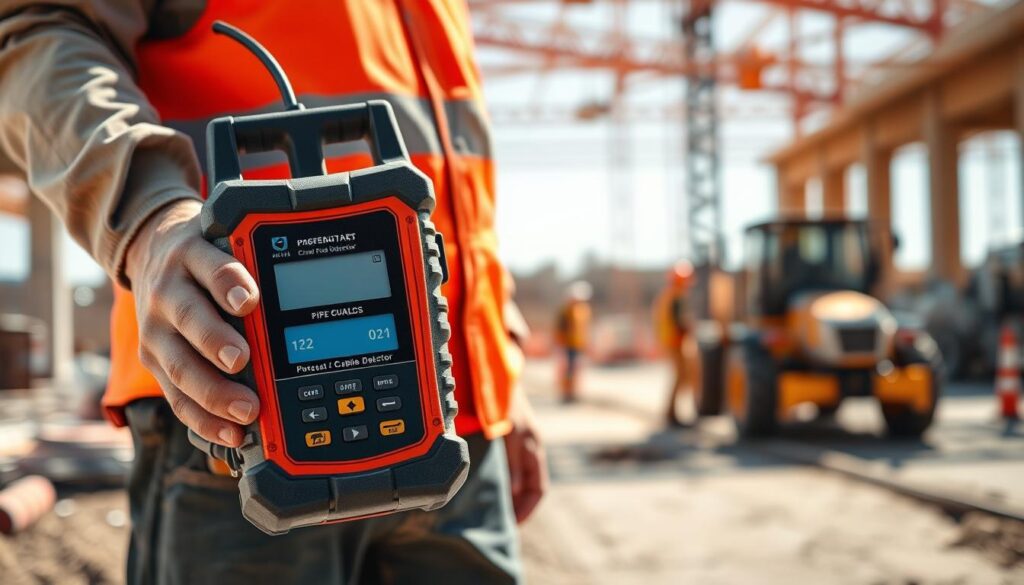
Proper Movement Techniques
To scan effectively, you need to move the detector across the wall with even pressure and consistent speed. There are two primary scanning techniques:
Horizontal Scanning
Horizontal scanning is ideal for detecting pipes and cables that run vertically. Move the detector steadily from side to side.
Vertical Scanning
For objects that run horizontally, use vertical scanning. This involves moving the detector up and down to cover the area comprehensively.
Interpreting Detection Signals
Understanding the signals from your detector is key to safe drilling. Most detectors use LED indicators to signal the presence of objects.
Understanding LED Indicators
Typically, red lights indicate the presence of metal, while green or yellow lights may signal the absence of objects or the presence of non-metallic objects. Refer to your device’s manual for specific interpretations.
Confirming Results with Multiple Passes
To avoid missing hidden objects, make multiple passes over the same area. This confirms the presence and location of pipes, cables, and studs.
Special Considerations for Different Wall Types
Different wall types require adjusted techniques. For instance, plaster walls may require a gentler touch, while concrete walls may need more pressure.
Plaster Walls
When scanning plaster walls, be cautious of the surface damage. Use a gentle touch to avoid scratching the surface.
Concrete Walls
For concrete walls, apply more pressure to ensure good contact. The dense material may require adjustments in sensitivity.
Drywall
Drywall is generally easier to scan. However, be aware of the potential for false signals due to the material’s density.
By following these steps and considering the type of wall you’re dealing with, you can safely use your pipe and cable detector to avoid accidents.
Conclusion: Ensuring Safety and Accuracy in Detection
To summarise, employing a pipe and cable detector effectively is vital for ensuring your safety and the integrity of your walls. By following the guidelines outlined in this article, you can significantly reduce the risks associated with drilling into walls containing hidden utilities.
Key to safe detection is understanding your wall type and using the correct scanning techniques. Regular practice with your detection device will build your familiarity and confidence in interpreting results. It’s also advisable to maintain documentation of detected utilities for future reference.
Remember, even professional engineers rely on proper detection techniques. By prioritising safety and taking the time to detect pipes and cables accurately, you can avoid costly damages and ensure a safe working environment.
